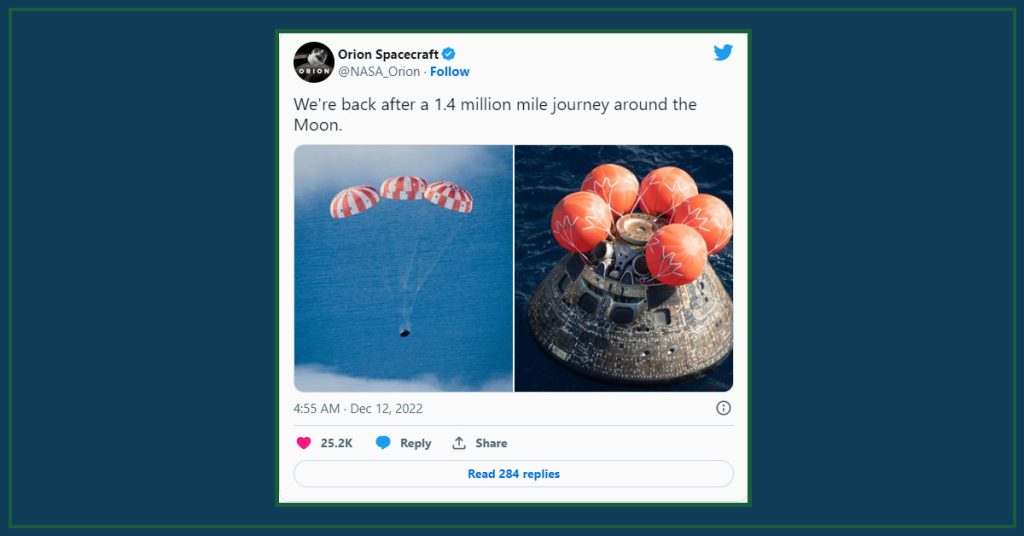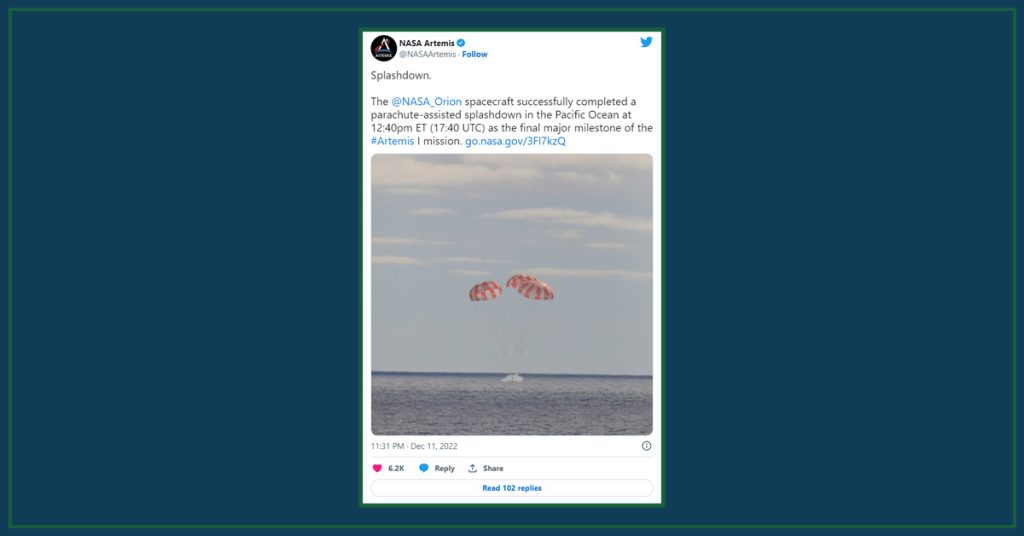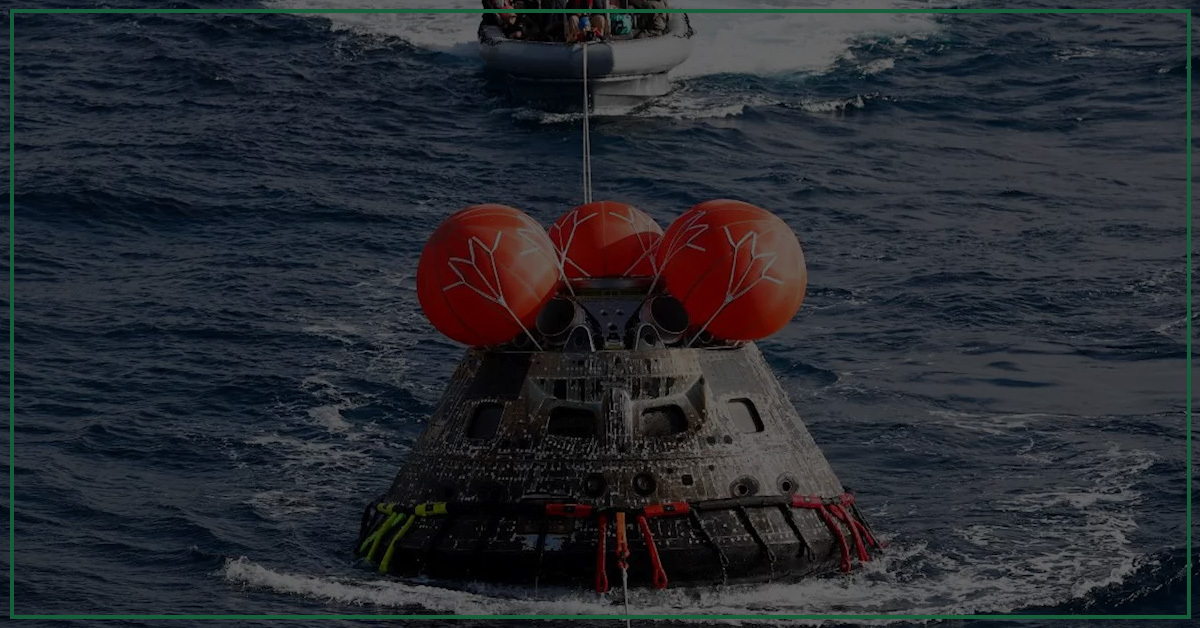NASA’s Orion space capsule splashed down safely in the Pacific on Sunday, completing the Artemis 1 mission — a more than 25-day journey around the Moon to return humans there in just a few years.
The robotic capsule drifted down to the sea with the aid of three enormous red and orange parachutes after tearing through the atmosphere at a speed of 25,000 miles per hour (40,000 kilometres per hour), as seen on NASA TV.
“NASA, we had a picture-perfect splashdown,” said Melissa Jones, NASA’s landing and recovery director.
Orion travelled almost a million miles around Earth’s orbiting satellite and returned, farther away from Earth than any previous habitable spacecraft.
“For years, thousands of individuals have poured themselves into this mission, which is inspiring the world to work together to reach untouched cosmic shores,” said NASA Administrator Bill Nelson.
“Today is a huge win for NASA, the United States, our international partners, and all of humanity,” he added.
Following the touchdown, helicopters flew over the floating spacecraft, which revealed no signs of damage.

After some preliminary testing, Orion will be retrieved by a US Navy ship stationed off the coast of Mexico’s Baja California.
The gumdrop-shaped capsule had to survive a temperature of 2,800 degrees Celsius (5,000 Fahrenheit) as it reentered the Earth’s atmosphere – almost half the warmth of the Sun’s surface.
The primary purpose of this mission was to test Orion’s heat shield in preparation for the day when humans, rather than test mannequins, ride inside.
The success of this mission was critical for NASA, which has committed tens of billions of dollars to the Artemis program, which would return people to the Moon and prepare them for a future voyage to Mars.
The capsule was initially tested in 2014, but it remained in Earth’s orbit, returning to the atmosphere at a slower speed of roughly 20,000 miles per hour.
Choppers, divers, and boats
In an exercise that NASA has been practising for years, the USS Portland was positioned to collect the Orion capsule. In addition, helicopters and inflatable boats were used.
As it approached the blue waters of the Pacific, the descending spacecraft slowed to a speed of 20 miles per hour.
NASA then intended to let Orion float for two hours to collect data, which would be far longer than if astronauts were inside.
“We’ll watch how the heat soaks back into the crew module and impacts the temperature inside,” NASA’s Orion vehicle integration manager, Jim Geffre, said last week.
Divers will next link cables to transfer Orion onto the USS Portland, an amphibious transport dock vessel with a partially submerged stern.
This water will be progressively pushed out of the spaceship so that it may rest on a platform intended to hold it.

This should take between four and six hours after splashdown.
The Navy ship will then proceed to San Diego, California, to unload the spacecraft a few days later.
Orion has already flown 1.4 million miles after taking out from Florida’s east coast on November 16, aided by the massive SLS rocket.
It travelled fewer than 80 miles from the Moon’s surface at its closest point. It also broke the distance record for a habitable capsule from Earth, travelling 268,000 miles at its furthest point.
Artemis 2 and 3
The recovery of the spacecraft will allow NASA to collect data that will be critical for future missions.
This includes data from sensors that detect acceleration and vibration and the functioning of a special vest worn by a mannequin in the capsule to evaluate how to protect people from radiation while travelling through space.
Some capsule components should be suitable for reuse in the Artemis 2 mission, which is currently in the design phases.
That mission, scheduled for 2024, will carry a crew to the Moon but will not land on it. NASA is anticipated to announce the selected astronauts soon.
Artemis 3, which is slated for 2025, will see a spacecraft land for the first time on the Moon’s south pole, where scientists expect to find water in the form of ice.

NASA intends to send a woman and a person of colour to the Moon for the first time as part of the Artemis mission.
Only 12 individuals have stepped foot on the Moon, and all of them are white men. This occurred during NASA’s famous Apollo missions, which concluded in 1972.
NASA intends to create a lasting human presence on the Moon by building a surface base and an orbiting space station.
Learning to survive on the Moon should aid engineers in developing technology for a multi-year journey to Mars, potentially in the late 2030s.





